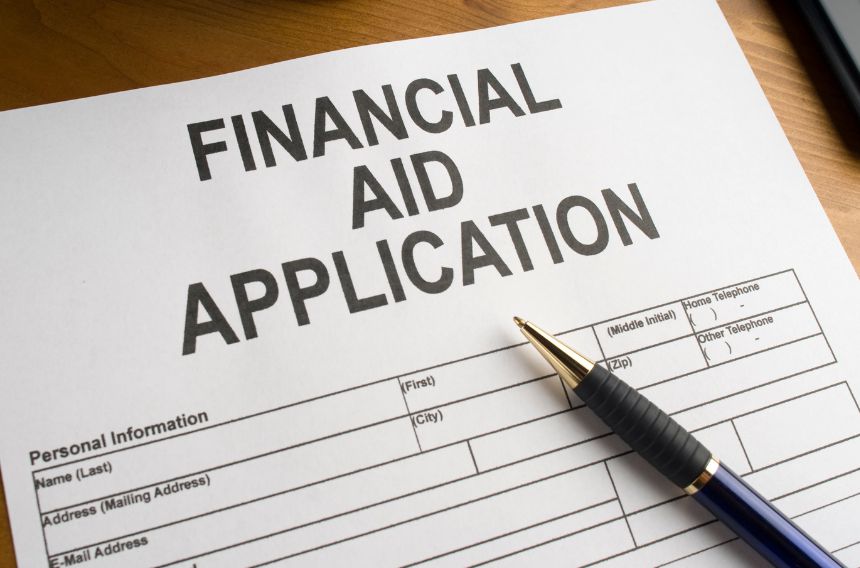How Long Does It Take to Get a Student Loan?
If you’re planning to pursue higher education, financing your education is one of the most crucial things you must consider. While scholarships and grants are ideal options, they may not always cover the entire cost you need to pay.
This is when you can take a loan. But how long does it take to get a student loan? It’s a common question asked by students who want to ensure they have the funds they need when they start school.
In this article, we’ll delve into the details and give you a better understanding of the student loan application process.

Let’s Consider Step-By-Step How Much Time You Need To Get A Student Loan
As we’ve established that the duration to acquire a student loan can fluctuate based on various factors, let’s take a closer look at the details. The key is understanding how long it takes to get a student loan.
This section will take a step-by-step approach to help you realize the timeframes involved when you want to take a loan. We’ll explore everything from gathering the required documentation to waiting for loan disbursement.
By the end of this article, you’ll have a comprehensive understanding of what to expect when applying for a student loan. So, let’s break down the timeline for when you want to take a loan.
Step 1: Complete and Submit the FAFSA

Submitting the FAFSA (Free Application for Federal Student Aid) is crucial in obtaining a student loan. The FAFSA is the primary tool the federal government uses to evaluate your qualification for financial assistance.
The application requires information about your finances, such as income, taxes, and household size. That’s why paying attention to the information you must provide is crucial.
Submitting the FAFSA as early as possible is important since certain financial aid programs are given out on a first-come, first-served basis. The FAFSA also helps establish your qualification for federal grants, work-study programs, and other types of financial aid.
Upon submitting the FAFSA, you’ll receive a Student Aid Report (SAR) summarizing your provided details. You can make corrections or updates to your FAFSA in case of errors or changes. The government will use this information to decide your financial requirements and the amount of aid you can receive.
How Much Time This Step Takes
This process usually takes around 30 minutes to an hour. It depends on how familiar you are with the process. And how quickly you can gather the necessary information.
Step 2: Wait for Your FAFSA to Be Processed
Once you submit your FAFSA, you must wait for it to be processed. This can take anywhere from three days to three weeks. It depends on how you submitted it and whether you provided all the necessary information.
Your application will be assessed during this period, and your Expected Family Contribution (EFC) will be determined. EFC measures your family’s capacity to contribute to your education.
The EFC will determine your eligibility for federal financial aid programs. During this period, it’s crucial to monitor your email frequently. You may receive requests for additional information or documentation to verify the details you provided on your FAFSA.
After your FAFSA has been processed, you’ll be issued a Student Aid Report (SAR), which summarizes your eligibility for financial aid. Additionally, you can track the status of your FAFSA online anytime.
How Much Time This Step Takes
Your FAFSA processing time can take from three days to three weeks. It mostly depends on how you submitted it and whether you provided all the necessary information.
Step 3: Review Your Financial Aid Award Package
Once your FAFSA has been processed and your eligibility is established, you’ll receive an aid award package that specifies the types of financial aid you’re qualified to receive. This encompasses grants, work-study programs, and loans.
It’s important to scrutinize this package attentively to comprehend the terms and conditions of each type of assistance. You’ll have to accept or reject each type of assistance offered to receive the aid. You may have to complete further paperwork or satisfy specific criteria in certain circumstances.
Read the fine print and understand your responsibilities before accepting any financial aid. This will help to avoid any unexpected surprises down the line.
How Much Time This Step Takes
The time it takes to review your financial aid award package depends on the complexity of the package. But it typically takes a few days to a week.
Step 4: Complete Student Loan Entrance Counseling
Since we covered how long it takes to get a student loan, let’s review the entrance counseling. Before receiving federal student loans, you’ll need to complete student loan entrance counseling. This process helps you understand your responsibilities and rights as a borrower.
It also offers essential insights into loan repayment, interest rates, and other loan-related matters. To fulfill entrance counseling, you must log in to the federal student aid website and proceed with the prompts to reach the counseling session.
The session typically takes about 20–30 minutes to complete and may include quizzes to test your understanding of the material. Once you’ve completed the session, your school will be notified, and you’ll be able to receive your loan funds.
It’s essential to take the time to complete entrance counseling thoroughly. This will ensure you understand your obligations as a borrower and can manage your loans effectively.
How Long This Step Takes
Completing student loan entrance counseling usually takes about 20–30 minutes. It’s a short but crucial step to ensure you understand your responsibilities as a borrower.
Step 5: Sign the Master Promissory Note
The Master Promissory Note (MPN) is a binding agreement that specifies the conditions and requirements of your federal student loans. To sign the MPN, you must access the federal student aid website using your FSA ID and proceed with the instructions to finalize the process.
You’ll have to provide personal information, namely your social security number, name, and contact details. You’ll also need to give information on your school and the loans you receive. Once you’ve signed the MPN, it will be valid for ten years, so you won’t need to complete this step for subsequent loans.
It’s essential to read the MPN carefully to understand your rights and responsibilities as a borrower and to ensure that you’re comfortable with the terms of your loans. Signing the MPN is relatively straightforward and takes approximately 30 minutes.
How Long This Step Takes
The process of signing the master promissory note usually takes about 30 minutes. It’s a crucial step in securing your federal student loans.
Federal vs. Private Student Loans
When the time comes to take a loan, there are two main types: federal and private. The government funds federal loans and has fixed interest rates. Private lenders issue private loans and may have variable interest rates.
Federal loans typically offer more borrower protections and repayment options, such as income-driven repayment plans and loan forgiveness programs. On the other hand, private loans may have stricter repayment terms and fewer options for borrowers.
| Factor | Federal Student Loans | Private Student Loans |
| Interest Rates | Fixed interest rates, determined by Congress | Variable interest rates, determined by the lender based on creditworthiness and other factors |
| Repayment Terms | Various repayment plans, including income-driven repayment options and loan forgiveness programs, | Varies by lender, with some offering flexible repayment plans and others requiring immediate repayment |
| Eligibility | No credit check or cosigner required for when you take a loan | Typically requires a credit check and/or cosigner when you take a loan |
| Borrowing Limits | Annual borrowing limits vary based on dependency status and year in school | Varies by lender, with some offering higher limits than federal loans |
The FAFSA application, which is required to qualify for federal loans, can take a few weeks to process, but once you’ve been approved, the loan will be disbursed directly to your school.
Private loans, on the other hand, require a separate application process and can take several weeks to process. Private loans often require a credit check, further delaying the process.
How to Check Your Student Loan Status
Checking the status of your student loan can provide important information about your loan balance, payment due dates, debt, and other relevant details. To check your student loan status, you’ll need to log in to your loan servicer’s website. We’ve compiled a step-by-step guide to assist you with navigating the process:
- Visit your loan servicer’s website and look for the login section.
- Enter your login credentials, including your username and password or your account number and PIN.
- Once logged in, navigate to the page displaying your loan information. This may be labeled as “My Loans,” “Loan Status,” or something similar.
- Check the loan status to see if your loans are in good standing, if any payments are past due, or if any other issues need attention.
- If you have any questions or concerns about your loan status, contact your loan servicer’s customer service department for assistance.
Conclusion
Bottom line, the process of getting a student loan can vary depending on the type of loan you are applying for. Federal loans typically have a streamlined application process and can be processed within a few weeks, while private loans may take longer due to credit checks and other requirements.
It’s important to start the application process early and ensure you have all the necessary documentation to avoid delays.
Additionally, it’s essential to consider the terms and conditions of the loan carefully. After reading our article, you know how long it takes to get a student loan without getting into big debt.
By researching and staying organized, you can successfully navigate the student loan process and secure the funding you need to achieve your educational goals.
FAQ
Are student loans easy to get?
Student loans are not necessarily “easy” to get, as the process of applying and qualifying can be complex and time-consuming. However, many students can obtain loans to finance their education with the help of federal or private loan programs. It depends mostly on their financial situation and creditworthiness.
What credit score do I need to get a student loan?
The credit score requirements to take a loan vary depending on the type of loan. Federal loans generally do not require a minimum credit score. On the other hand, private lenders typically require a credit score of at least 650 to qualify.
How far before the school year should I apply for a student loan?
It is recommended to apply for a student loan as early as possible, ideally several months before the start of the school year. The loan type and application criteria will determine the specific timeline for obtaining a student loan. For federal loans, you can start submitting the Free Application for Federal Student Aid (FAFSA) on October 1st for the upcoming academic year. However, private loan timelines may differ depending on the lender.
Is there any way to speed up the process?
There are some steps you can take to help accelerate the student loan process. These include submitting your FAFSA as early as possible and completing all required documents promptly. Also, staying in communication with your loan servicer to ensure a smooth application process is important.
